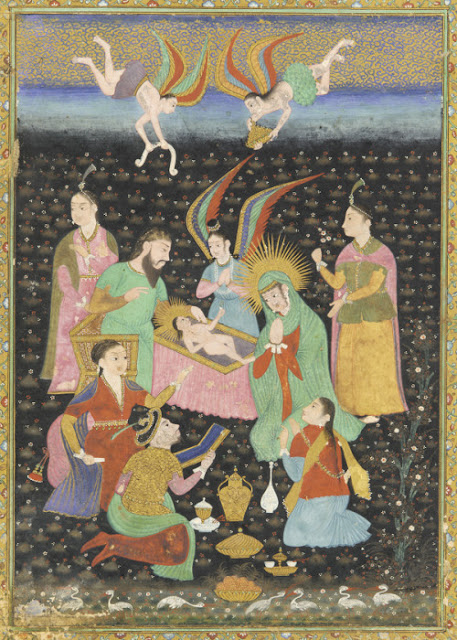The Gifts from the Orient
The Aromatic Plants
Aromatic plants are mentioned many times in the gospels.
When
Jesus refers to the hypocrisy of the Pharisees, who paid the tithe on low value
plants also, he names a series of them:
“Woe to you, scribes and Pharisees,
you hypocrites. You pay tithes of mint and dill and cumin and have neglected
the weightier things of the law: judgment and mercy and fidelity. (But) these
you should have done, without neglecting the others.” (Mt 23,23). Luke’s parallel text also mentions the rue. (Luke 11,42).
Jesus’ reproach is obvious: you are finicky and
pedantic about minutia, but you neglect much more important things.
There are also two more aromatic plants that play
a significant role in a few episodes of the Gospel, although they are not
original of Palestine: myrrh and nard.
Myrrh is a thorny plant, ovate leaves, and little
red flowers. It grows mainly in Ethiopia, that is its original environment from
where it spread to all Arabia. It was imported in Israel since the days of old
as a precious plant. A gummy resin oozes out its bark, either naturally or
after an incision. It is collected and dried. It becomes a very intense
aromatic substance, that is also effective as a drug. It can be dissolved in
water and drunk as a medicine; but usually it was ground and mixed with oil to make
an ointment that was used above all for the preservation of corpses. Its strong
aroma covered the smell of rot.
Myrrh figures in Matthew’s account among the
gifts the Wisemen take to the baby Jesus, besides gold and frankincense. (Mt
2,11).
If we read the text in a poetic and theological
way, we could discern an important meaning in those gifts through which the
evangelist demonstrates a Christological faith principle, that is: gold pays
homage to royalty; divinity is worshipped with frankincense and myrrh acknowledges
the humanity of Christ who is destined to die.
In fact, myrrh is mentioned again when Jesus is
crucified and then buried. Mark recounts that the people who crucified Jesus “…
gave him wine drugged with myrrh, but he did not take it”. (Mark 15,23). But,
above all, John is the evangelist who underlines the symbolic value of the
myrrh ointment brought by Nicodemus, the night caller. When it was time to bury
Jesus, Nicodemus finally came out and openly compromised himself by donating a precious
“mixture of myrrh and aloes weighing about one hundred pounds. (John 19,39).
That which had been prophesied by the gift of the
Wiseman, at the beginning of the story, becomes useful at the end to mark the
humanity of Jesus with a scent that overcomes death.
Nard instead is a flower; it is a small grassy
plant that originated in the Himalayas and grows on the great mountains of Asia
above ten thousand feet. It is valuable mainly for its rhizome, which is
perennial and very oily. Therefore, nard is recognized by its flowers but taken
for its root, which when pounded produces a very intensely scented oil that is
used to make perfumes. Like myrrh, nard was also an object of trade in
Palestine, and they were both very costly.
Nard is mentioned twice in the Song of Songs (SoS
1,12; 4,13); and, for that reason, it is also remembered by two evangelists in
the prophetic scene of the anointing of Bethany. Mark sets that scene in the
house of Simon the leper, and he does not mention the name of the woman who
“…came with and alabaster jar of perfumed oil, costly genuine spikenard. She
broke the alabaster jar and poured it on his head.” (Mark 14,3). John, instead,
introduces the woman as Maria, sister of Martha and Lazarus, who “…took a liter
of costly perfumed oil made from genuine aromatic nard and anointed the feet of
Jesus and dried them with her hair; the house was filled with the fragrance of
the oil.” (John 12,3).
In the two stories some details diverge, but the
facts coincide and play a symbolic role of primary importance. The woman makes
a prophetic gesture pouring a precious love scent that announces Jesus’ death
as a supreme divine waste, that is, an exaggeratedly big gift. The scent fills
the entire house, that is, it symbolically perfumes the entire world with the
overflowing richness of that love.
And Jesus’ love continues to fill our homes; and it fills the world because it is stronger than death.

%20%20Amhara%20Peoples%20-%20Public%20Domain%20Ethiopian%20Orthodox%20Painting.jpeg)



Comments
Post a Comment